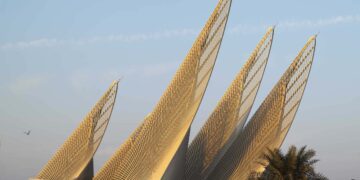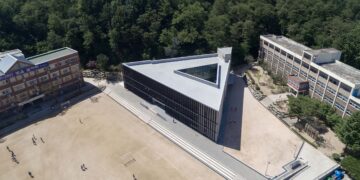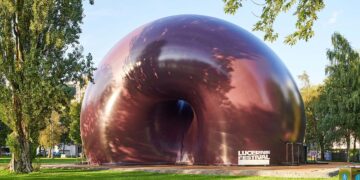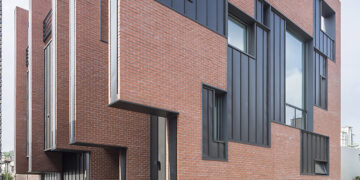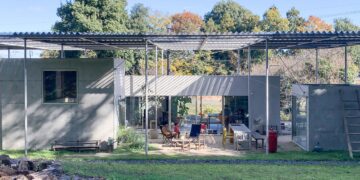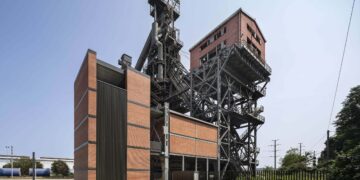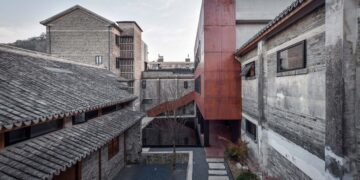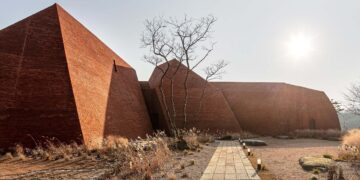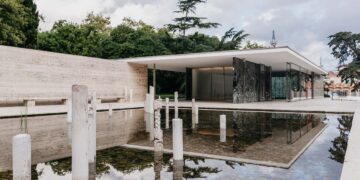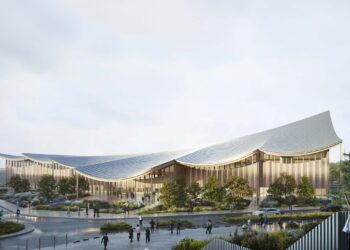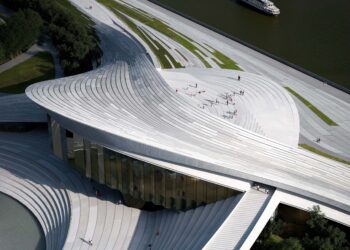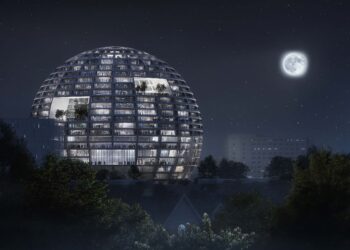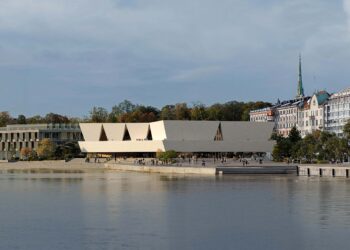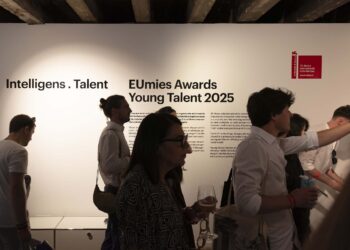UN17 Village, Denmark
Lendager Group, Årstiderne Arkitekter

The UN17 Village is the first building project in the world to translate all 17 of the United Nations’ Sustainable Development Goals (SDGs) into tangible action. The project is led by the pioneering sustainability architects, Copenhagen-based Lendager Group. In the prequalification stage, they were up against international heavyweights such as Bjarke Ingels Group and Henning Larsen.
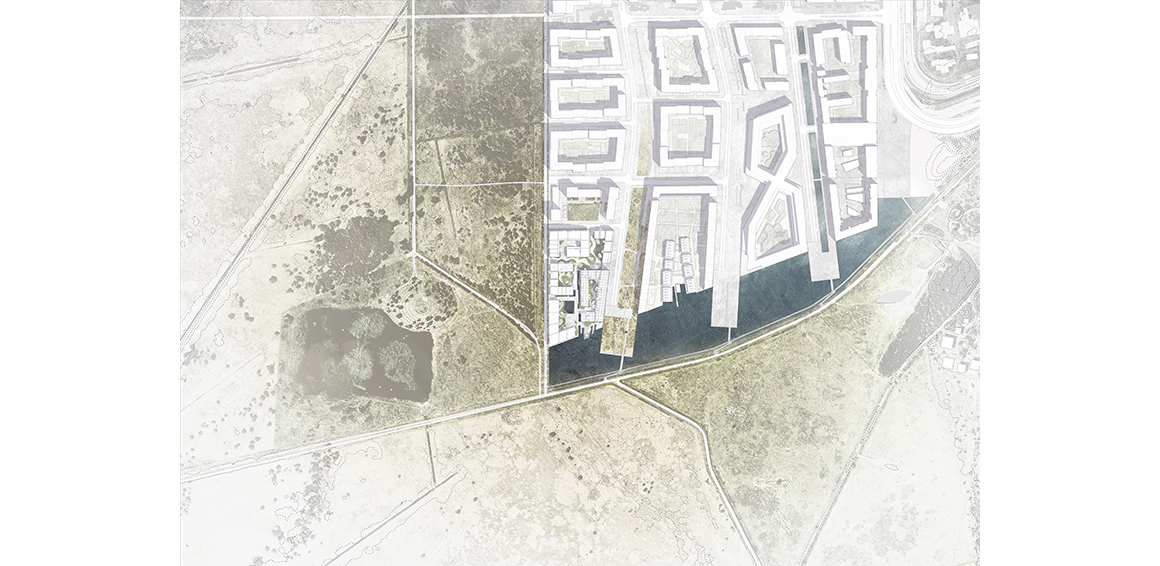
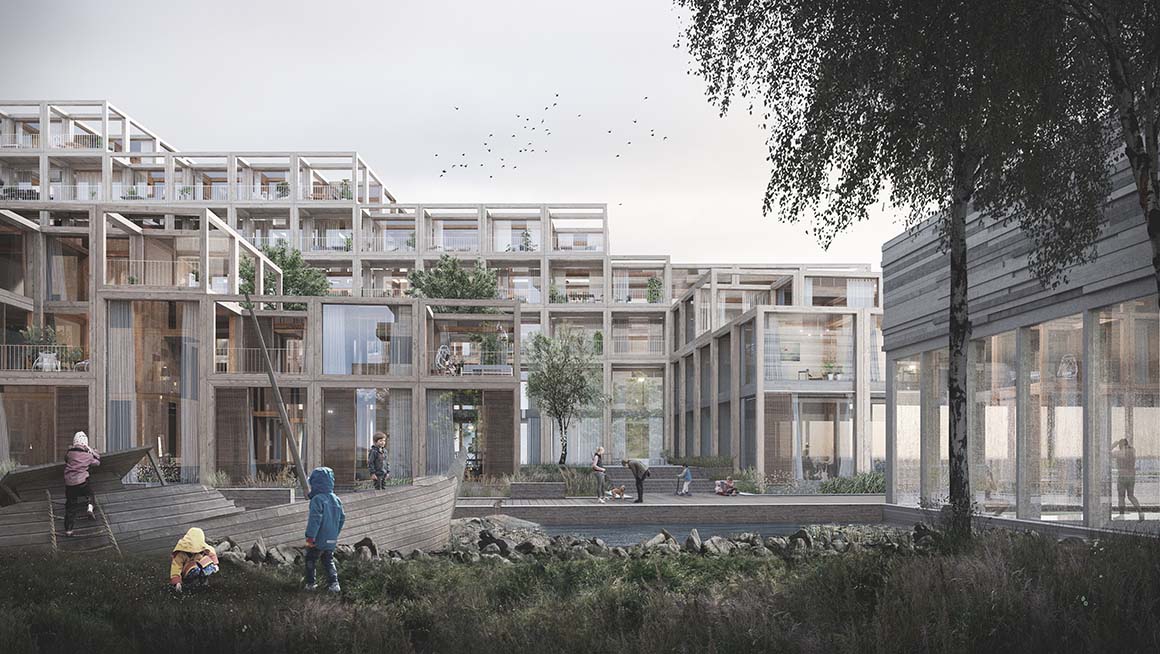

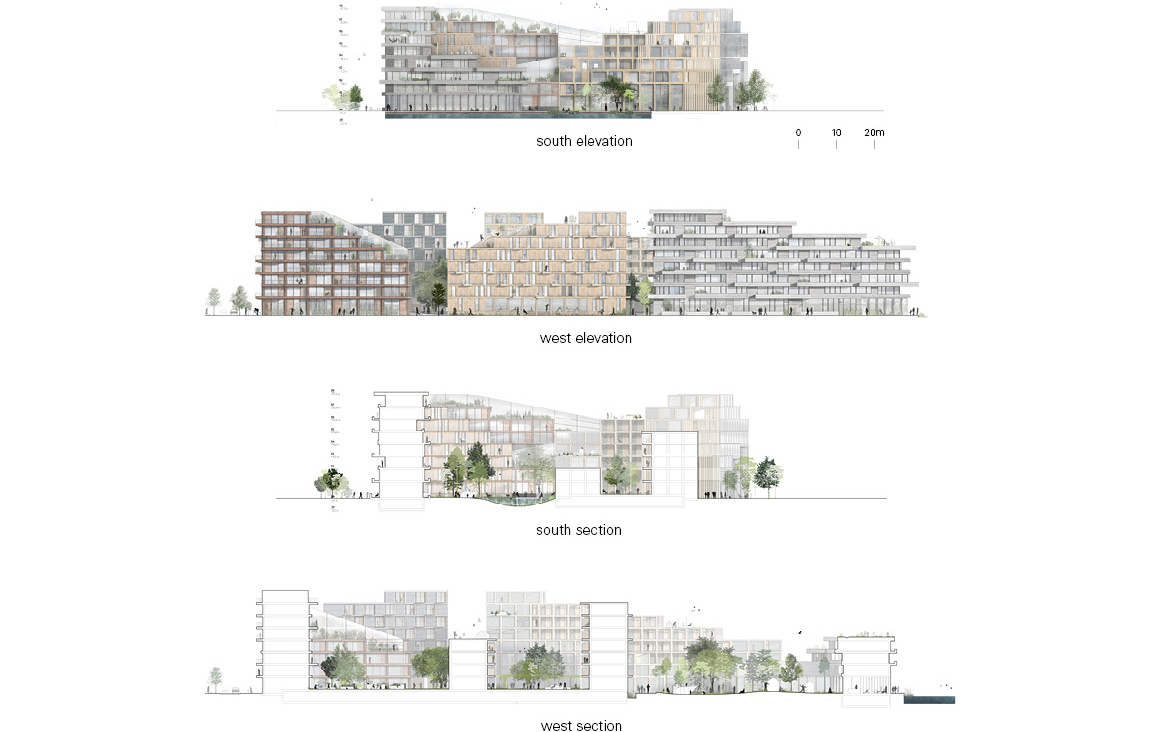
Unanimous decision
Pioneering sustainability solutions and commitment to the 17 SDGs were the decisive factors securing Lendager Group’s bid to design the UN17 Village – 400 new homes in Copenhagen, Denmark. The contest marks the end of 25 years of development, completing the new city district, Ørestad South.
The built environment is responsible for more than 40% of global emissions. However, it does not have to be this way. In nature, waste does not exist: organisms regenerate themselves and use dead organic matter as building blocks for future growth. The UN17 Village showcases how we can decouple growth from emissions by looking at waste as a resource, and by making sustainability and growth support each other without compromising on quality, aesthetics or price.
The UN17 Village is designed to be sustainable from multiple perspectives: environmental, social, operational, indoor-climate-related and bio-diverse. The UN17 Village will be built of upcycled waste, such as concrete, wood and window glass. Lendager Group’s design makes use of such materials on an industrial scale. The products are harvested and processed locally, creating local jobs and enabling, globally, the construction of tomorrow’s cities from today’s waste. As one of the world’s most alternative and sustainable building projects, the waste products used are upcycled to create nontoxic and certified materials.
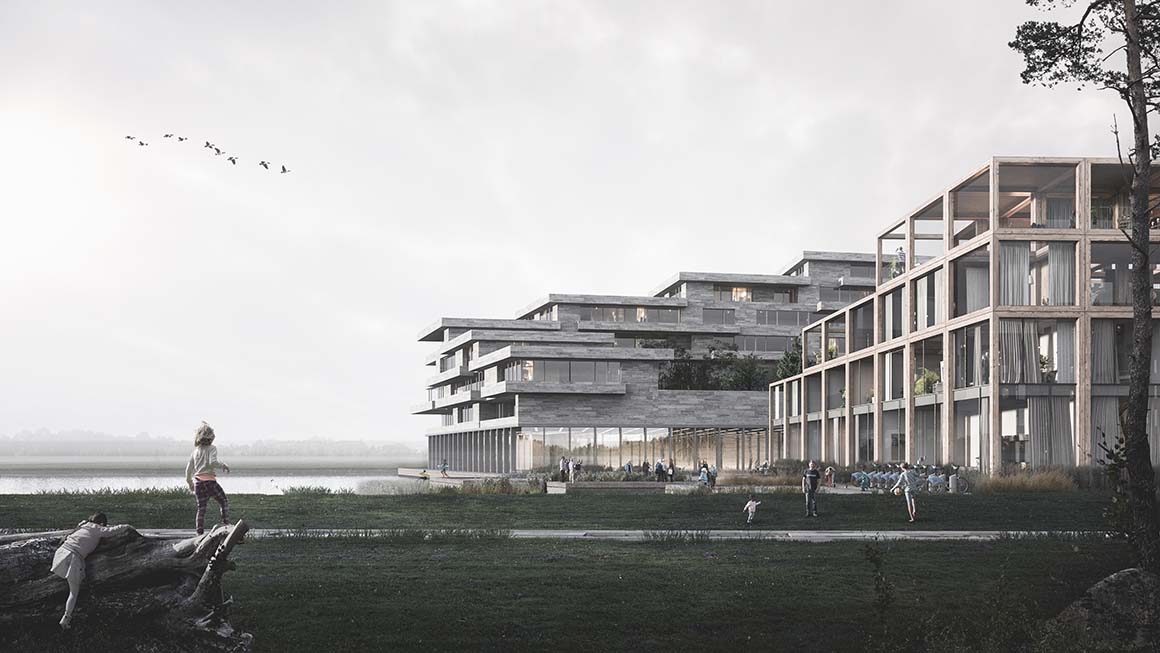

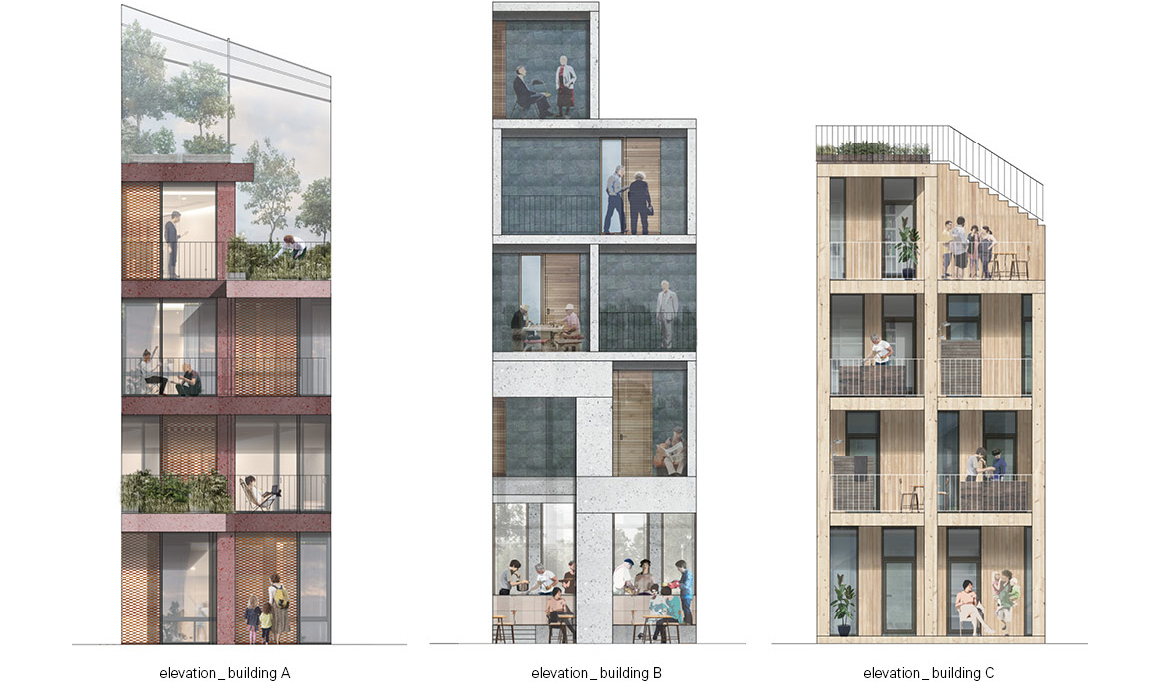
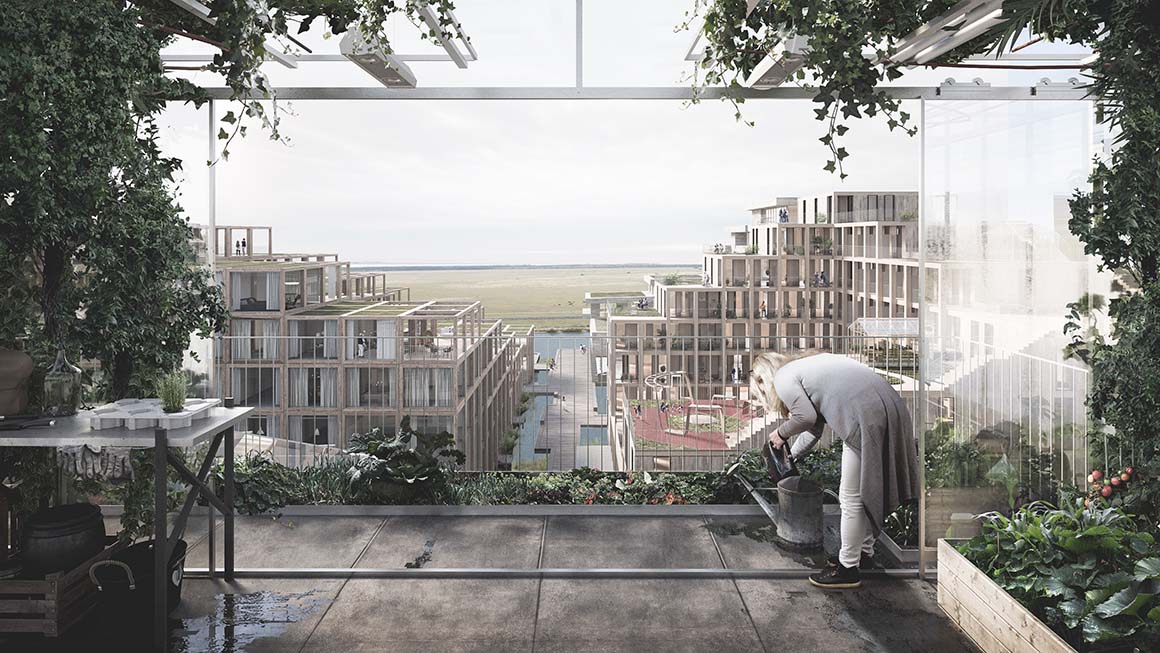
The houses are designed with a spacious feel, all their elements helping to promote sustainable living and to create a good indoor climate. With rooftop solar panels, the houses are intended to be self-sufficient. The biodiversity of the neighborhood increases with the roof gardens: this is a housing project with a design that incentivizes sustainable living.
“With the UN17 Village, we wanted to create not only an iconic and sustainable building from recycled materials, but also the opportunity for a sustainable lifestyle. So far, the focus in sustainable buildings has mainly been on their operational carbon emissions. We are looking at the whole life cycle of the building – including materials use, health, and quality of life.” explains Anders Lendager, CEO and founder of Lendager Group.
He continues: “We have developed a scalable process that brings all 169 milestones from the SDGs into focus. By translating these into concrete solutions, we have created a tool that makes it possible for everyone in the industry to implement the SDGs and to evaluate the result.”
Project: UN17 Village / Location: Copenhagen, Denmark / Contributing architects: Lendager Group, Årstiderne Arkitekter / Project leader: Philip Rufus Knauf / Project team: Jacob Blak, Sophie Daugaard Andersen, Majken Lynge Gribskjold, Kristian Knorr Jensen, Stephanie Levassor, Agata Marzec, Nicholas Ransome, Daniel Veenboer / Engineering: Moe and Arup / Client: NREP / Area: 35,000m² / Design: 2018

